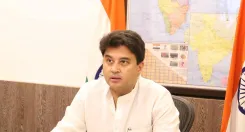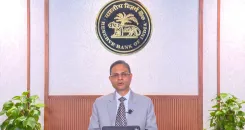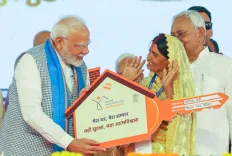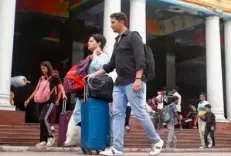How Has Digital India Enhanced Access to Healthcare, Housing, and Education?

Synopsis
Key Takeaways
- Digital India has expanded access to healthcare, housing, and education.
- Technological reforms have streamlined governance and empowered citizens.
- Innovative initiatives are crucial for socio-economic development.
- Collaboration among various sectors is essential for future growth.
- India's global economic standing continues to improve.
New Delhi, June 30 (NationPress) The Digital India initiative has significantly broadened access to healthcare, housing, and education in the nation over the past decade, stated Dr. Jitendra Singh, the Union Minister of State (Independent Charge) for Science and Technology, during a speech on Monday.
While addressing the opening session of the Southern Regional Conference of the Indian Institute of Public Administration (IIPA) at Pondicherry University, Singh highlighted how the measures implemented in the last ten years have not only improved service delivery but also empowered citizens, particularly those residing in remote and rural locales.
Singh referred to Digital India as “the default operating system of governance,” emphasizing that the transition from “minimum government, maximum governance” to a citizen-focused digital landscape is crucial for the country’s administrative and socio-economic advancements.
Mentioning initiatives like Ayushman Bharat and PM Awas Yojana, the Minister pointed out “how digital innovations have increased access to healthcare and housing.”
“India stands unique as the only nation where individuals can obtain insurance for pre-existing ailments. This exemplifies our citizen-first philosophy,” he remarked.
Singh also emphasized that reforms such as biometric and facial recognition-based identification systems have significantly contributed to making governance more humane.
“It’s not merely about adopting technology -- it’s about leveraging it to guarantee dignity and improved living conditions for every Indian,” he stated.
Moreover, the MoS highlighted various governance measures introduced since 2014, including DigiLocker, UMANG, Direct Benefit Transfer (DBT), and the JAM Trinity (Jan Dhan-Aadhaar-Mobile), underlining their role in minimizing bureaucratic delays and boosting transparency.
“These reforms are not just administrative advancements; they carry substantial socio-economic implications,” he explained, giving examples like self-attestation replacing notarized verification and digital life certificates which spare senior citizens from having to physically validate their existence to receive pensions.
In the realm of education, Singh pointed to the “One Nation, One Subscription” initiative, which grants access to premier global journals for researchers throughout India, describing it as a major step toward democratizing knowledge.
“The new digital framework has closed information gaps for students and researchers, regardless of their geographical location,” he remarked.
Lastly, the Minister underscored India’s ascendant global stature, with key metrics such as the Global Innovation Index, startup rankings, and patent filings showing significant improvement.
“We have progressed from being the 10th largest economy globally to the 4th, and we are on track to become 3rd by 2027,” he stated.
Encouraging greater collaboration among academia, administration, and the private sector for “Viksit Bharat 2047,” Singh noted that “the forthcoming phase will depend on how we unlock our untapped resources, from oceans to outer space.”









